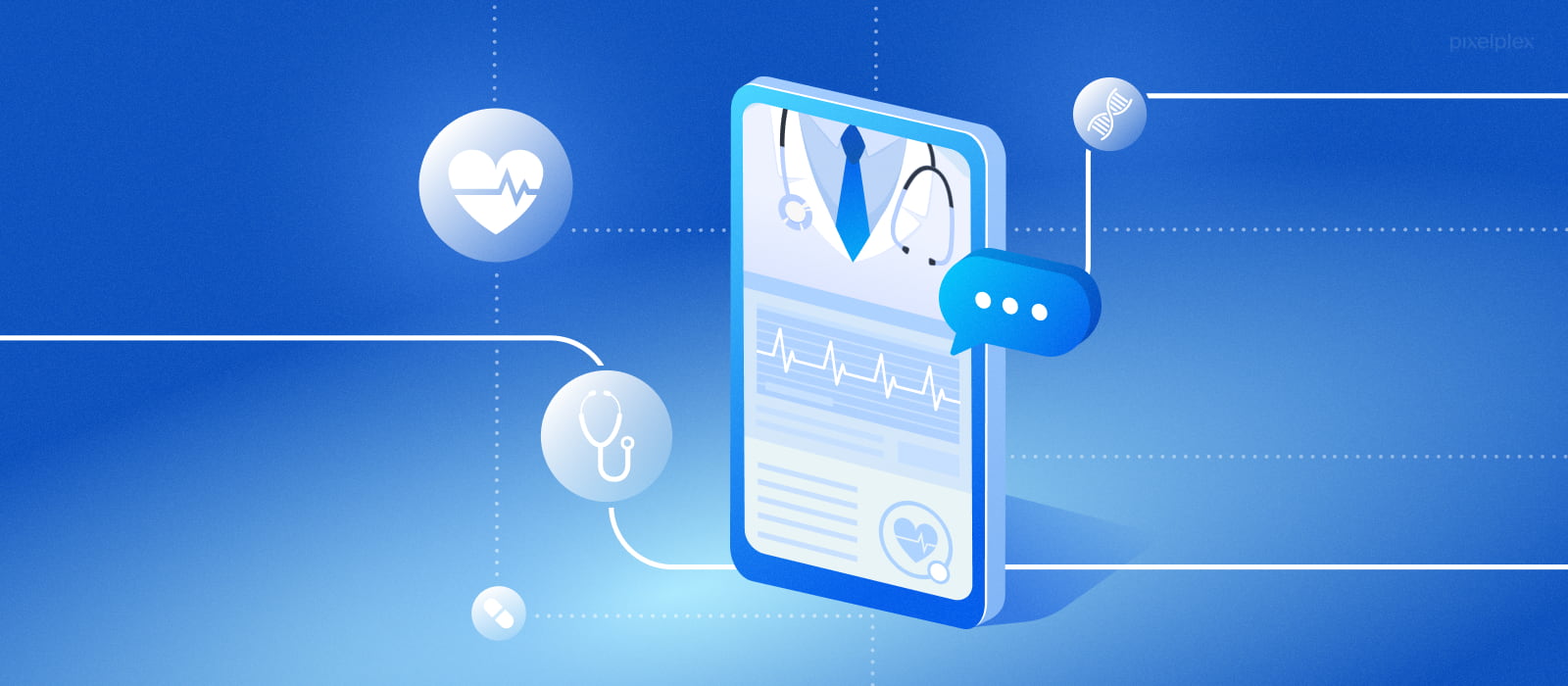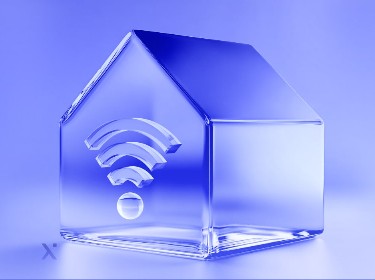The ideal model for the future of healthcare is an integrated, tech-enabled system in which primary care teams and physicians work together to deliver exceptional care provision. In a word, telemedicine.
Over recent years, investments in telemedicine have accelerated. As a result, the telehealth market is projected to grow from $90.74 billion in 2021 to $636.38 billion in 2028, at a CAGR of 32.1%.
The driving factors include the increase in the world’s population, the need to expand healthcare access, a shortage of physicians, advancements in telecommunications, and the urgent requirement to adopt the technology during the COVID-19 pandemic.
The growth is also driven by an overarching need to improve patient health outcomes and digitalize healthcare services.
But how is the telemedicine technology concept revolutionizing the healthcare sector? Read on to find out.
What is telemedicine technology?
Telemedicine is a health-related service in which traditional face-to-face patient-doctor interaction is replaced by interaction at a distance through information and communication technologies.
Although telemedicine has a long history, with its roots dating back to the 19th century and the invention of electricity and radio, it has come a long way since then. Today, with advances in communications and the Internet, telemedicine is more accessible than ever.
Technological developments enabling data analytics, artificial intelligence, and healthcare IoT have all transformed healthcare provision.
Health practitioners can access patients’ information, read and interpret test findings, and monitor vital signs from anywhere using this method. Additionally, the increase in connected wearables and health-related applications like video conferencing software, wearable health monitoring devices, digital stethoscopes, telemedicine carts, and mobile health apps makes deploying telemedicine solutions on a wide scale possible.
Check out our custom software development services to see what we can offer for your business
Telemedicine has become the new paradigm in healthcare, providing improved access to efficient and cost-effective, high-quality healthcare. According to research, the use of telemedicine has been growing rapidly. For example, more than 75% of hospitals in the United States have some form of telemedicine program. And even in a post-COVID era, this number is still rising.
How telemedicine benefits patients and healthcare in general
![]()
Telemedicine technology is enabling a new standard of care by granting a suite of benefits: better treatment and enhanced quality of care, increased access to healthcare and greater convenience, higher patient engagement, a safer environment, and last but not least — cost savings.
Better treatment and enhanced quality of care
Telemedicine technology has been shown to provide a better quality of care than traditional clinic visits or doctor’s visits since it enables frequent patient monitoring and data collection. Patients can receive timely treatment and be confident it is delivered using the latest technology. For example, managing patient medications and performing diagnostic test reviews can more easily be done privately and virtually.
Increased access to healthcare and convenience
Telemedicine provides greater reach to rural and underserved communities, making it more convenient to book and keep appointments. Similarly, people with limited mobility or those who cannot drive can get the care they need more quickly.
Thanks to telehealth technology, residents in rural areas can schedule online appointments, ask for prescription refills, browse educational materials, self-monitor chronic diseases, and request emergency care.
From their side, doctors who treat patients with chronic diseases may, for example, receive alerts on troubling symptoms or regularly review patient dashboards with patient condition trends.
Higher patient engagement
When it comes to healthcare management, patients have different responses. Some wait for a doctor to check their condition and prescribe medication, while others want to know more about their symptoms and treatment process. Telehealth works for both types, and can transform a passive patient into an active participant through a number of steps:
- Encouraging patient participation by giving them access to track their medical records in a secured patient portal
- Giving patients and doctors what they need for more transparent communication
- Personalized text messages about healthcare management which enhance patients’ ability to apply critical thinking to their decision-making and behavior.
Introduce yourself to Doctime — an online service and an appointment scheduling platform for health centers and their clients developed by PixelPlex
Safer environment
Improving health outcomes is very challenging when patients are asked to sit in busy waiting rooms full of sick patients. Whenever patients share the same space, they are at risk of airborne illnesses. For its part, telehealth allows potentially contagious people to get the care they need without exposing others to harm.
Consider the importance of telemedicine technology in helping to prevent the spread of COVID-19, when doctors used telehealth appointments to prescreen patients for possible infection. This way, providers were protected while delivering guidance and monitoring patient progress.
Cost savings
Сost-effectiveness is always an important consideration when making medical decisions. Studies suggest that telemedicine technology realizes significant total service cost savings compared with traditional care programs, averaging $13,713 per annum.
A case in point is the experiment conducted by Intermountain Healthcare. Since the program began in 2017, the Intermountain Patient Safety Monitoring system has served more than 9,500 patients for a combined total of more than 1.4 million hours.
Research is showing that remote monitoring programs have significantly reduced patient falls, increased confidence among patients and families, and helped reduce overall costs for patients and hospitals.
What are the limitations of telemedicine?
Any nation seeking to raise health care quality, increase access and lower costs should be expanding telemedicine technology. However, barriers in the form of security concerns, emergency suitability, technology-related problems, and the inability to conduct a real-life medical check-up should all be taken into consideration.
Not suitable for emergency situations
Some types of care still need to be performed in person. For example, patients have to go into the office for procedures like imaging tests, taking blood samples, or diagnoses requiring a more hands-on approach. Inaccurate dosing of weight-based drugs in the case of chemotherapy treatments or pediatric medications can occur due to the lack of the option to weigh patients. Telemedicine technology also has its limitations in the case of medical emergencies such as broken bones or heart attacks, where immediate in-person care is needed.
Moreover, even if recent modernization initiatives have enabled accident and emergency (A&E) departments to purchase a range of telemedical equipment, it is still the case that trauma and emergency medicine face significant hurdles regarding the accessibility of care, expertise, and technology.
Inability to conduct a real-life medical check-up
While telemedicine can provide patients with access to healthcare providers, it may be of a different quality to the care that they would receive in-person at the office. Some patients also simply prefer hands-on, in-person care and respond better to it.
Moreover, some patients might need to make themselves more familiar with video conference technology; similar preferences for in-person interactions in specialty care services have been observed.
Technology-related problems
Among the most significant issues holding back telemedicine are the technological limitations that come with it. As a result, many physicians and patients need help adapting to this technology effectively.
This “digital divide” can further deepen health or socioeconomic disparities in respect to access to telemedicine. But even among individuals with adequate Internet access, the healthcare sector needs to understand the costs of such investments and the learning curve required of patients and staff alike.
Have you heard about digital twins? This technology can greatly benefit the healthcare industry. Find out more about it
Security concerns
The security of personal health data transmitted electronically has long been a worry. One of the primary concerns for the European Commission’s new EU4Health program is better-harmonized data systems that can play a crucial role in strengthening health systems and protecting sensitive data for patients and providers alike.
What are the main telemedicine technology applications?
![]()
Let’s see how theory evolves into practice and read more about some of telemedicine technology’s most useful applications.
Chronic disease management and treatment
Much healthcare spending is dedicated to chronic illness management and treatment. What can be achieved through telehealth technology is reducing the number of in-person office visits for chronically ill patients while increasing the likelihood that they will adhere to their treatment plans.
Superior clinical outcomes don’t just save lives but money too. For example, each year, 805,000 Americans suffer a heart attack. If 40% of heart attacks could be avoided through telemedicine and consistent screening protocols, $6.9 billion annually could be saved nationwide.
Remote monitoring
Many technologies enable your provider or healthcare team to monitor your health remotely. Among these technologies are:
- Web-based or mobile applications that facilitate seamless data transmission to your provider. For instance, if you have diabetes, you can conveniently upload crucial information such as meal diaries, blood sugar readings, and medication details for thorough review by a dedicated nurse.
- Innovative wearable devices that monitor key indicators like blood pressure, blood sugar levels, and oxygen saturation. Moreover, they offer personalized notifications, reminding you to engage in regular exercise or adhere to medication schedules.
- Specially designed home monitoring systems tailored for senior patients or individuals with dementia. These advanced systems can detect subtle changes in daily activities, enabling early identification of potential issues like falls or irregularities in routines.
Patientory is a blockchain-powered app that allows users to monitor their health status and keeps their data safe and secure. Learn more
Medication management
Often patients may be reluctant to schedule in-person visits to discuss potential side effects and concerns about efficacy. However, patient outcomes can be improved when providers change their dosage or medications promptly.
Telehealth lets patients renew their prescriptions without calling or having to visit their providers in person. Moreover, it allows for better management of medication, reduced readmissions to hospital, and enhanced medication compliance.
Follow-up visits
Telemedicine’s video conferencing makes it easy for patients to comply with follow-up care and appointments, increasing the odds that their treatment will be successful and improving post-hospital outcomes.
Clinical staff can assess the patient’s file and response to treatment virtually. This allows them to intervene before a costly hospital readmission becomes necessary.
Pre- and post-operative care
In many cases, pre-and post-operative visits are well-suited to telehealth. Educating patients remotely before procedures has a number of benefits. For example, the process is very convenient for patients located in rural areas, where making in-person visits is particularly burdensome. Additionally, on the post-operative side, conducting follow-ups via telehealth means patients can avoid potential exposure to infection and the discomfort worsened by traveling to healthcare facilities.
Mental health treatment
By removing barriers to access and working on eliminating patients’ privacy concerns, telehealth technology has proved to be safe and effective for treating anxiety, depression, PTSD and other mental health conditions. In addition, patients reluctant or unwilling to seek mental health treatment in person may find it less threatening and more comfortable to be treated virtually via video teleconferencing.
Mental health practitioners implementing telemedicine can also see more patients and still provide high-patient care. Advances like these can help more patients get the services they need, reduce geographic-based access limitations, and improve time management.
Test result sharing
While a patient’s visit to the provider’s office to study their test findings is only sometimes necessary, telephone communication is frequently insufficient for critical diagnostic information.
Telehealth enables providers to evaluate patients’ diagnostic imaging and lab results to help them fully understand what the tests have shown and to help them decide what action they need to take. What’s more, it establishes a better doctor-patient relationship.
What does the future hold for telemedicine technology?
With technology rapidly advancing, physician shortages increasing, and our population aging, the use of telemedicine could be more critical than ever.
The digital tools and solutions that have emerged in recent years are at the core of improved healthcare. But to get the best out of the technologies, you need help from us.
PixelPlex healthcare software solutions are here to empower your organization, improve patient outcomes, and revolutionize the way you deliver services. Browse through our major service offerings designed for high-impact advice, engineering, implementation, operational modernization, and improved patient experience.
Our mission is to help you to make your services universally accessible, beneficial, progress-enabled, and secure.




